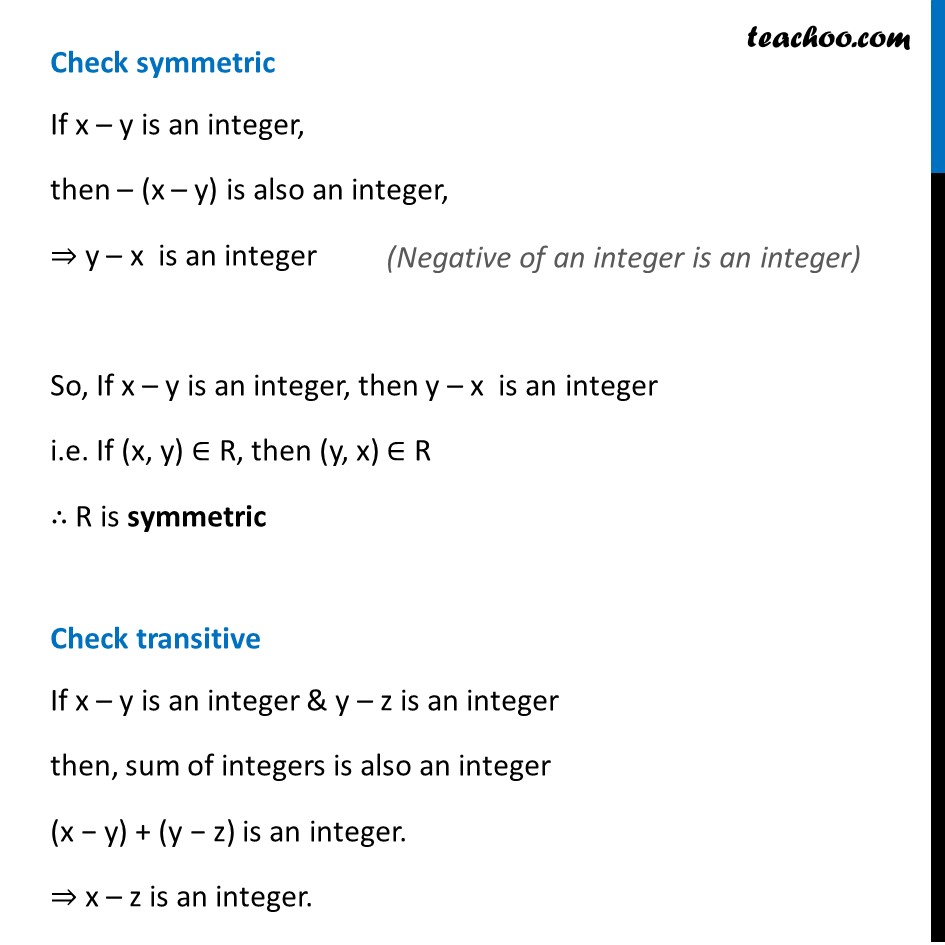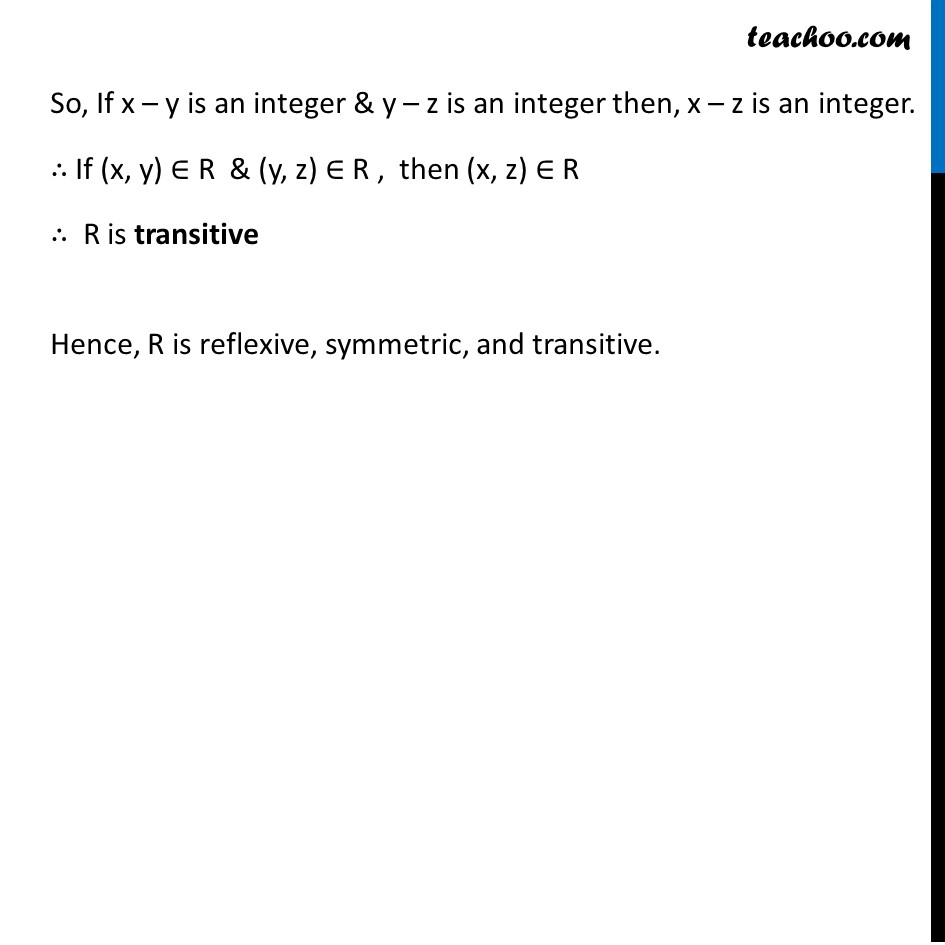


Ex 1.1
Last updated at Dec. 16, 2024 by Teachoo



Transcript
Ex 1.1, 1 Determine whether each of the following relations are reflexive, symmetric and transitive: (iv) Relation R in the set Z of all integers defined as R = {(x, y): x − y is as integer} R = {(x, y): x − y is as integer} Check Reflexive Since, x – x = 0 & 0 is an integer ∴ x – x is an integer ⇒ (x, x) ∈ R ∴ R is reflexive Check symmetric If x – y is an integer, then – (x – y) is also an integer, ⇒ y – x is an integer So, If x – y is an integer, then y – x is an integer i.e. If (x, y) ∈ R, then (y, x) ∈ R ∴ R is symmetric Check transitive If x – y is an integer & y – z is an integer then, sum of integers is also an integer (x − y) + (y − z) is an integer. ⇒ x – z is an integer. So, If x – y is an integer & y – z is an integer then, x – z is an integer. ∴ If (x, y) ∈ R & (y, z) ∈ R , then (x, z) ∈ R ∴ R is transitive Hence, R is reflexive, symmetric, and transitive.